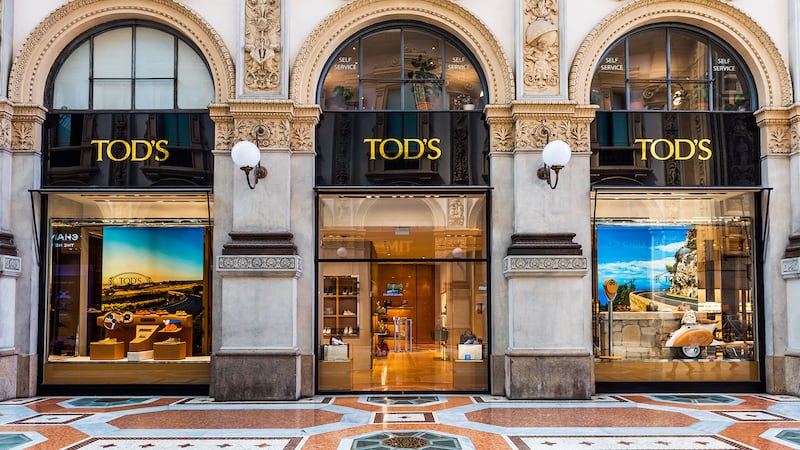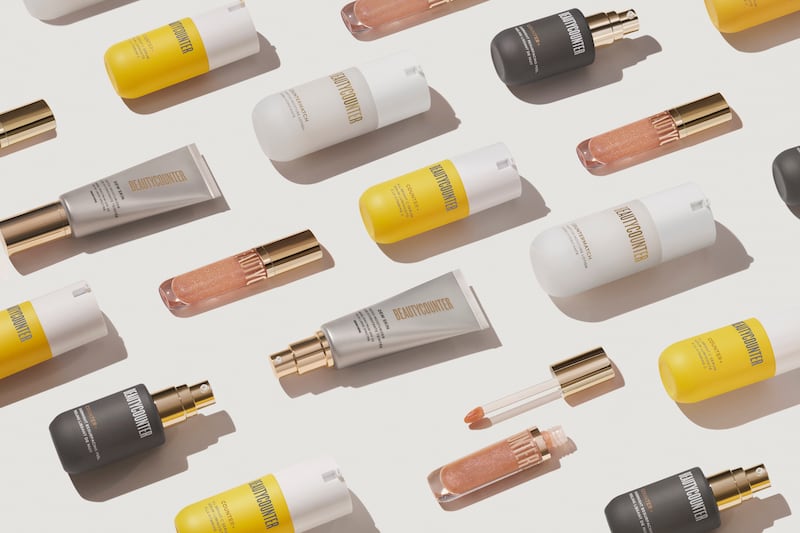
The Business of Fashion
Agenda-setting intelligence, analysis and advice for the global fashion community.

Agenda-setting intelligence, analysis and advice for the global fashion community.

It’s been nearly two years since the US introduced a strict ban on products from China’s cotton-producing Xinjiang region over forced labour concerns. And yet cotton from the area is still everywhere, according to a study published this week.
Traces of the restricted raw material were found in nearly a fifth of products analysed by researchers using isotopic testing, which matches a fibre’s chemical fingerprint to the geography where it was grown — a kind of forensic CSI for fabric.
“Think of the products in your closet, or somewhere in the kitchen or shoe cabinet; one in five of those products could have Xinjiang cotton,” said Meilin Wan, vice president of textiles at Applied DNA Sciences, one of the firms behind the new study. “It’s the elephant in the room that there is so much of this cotton in the world’s supply chain.”
The findings highlight just how challenging it remains to effectively police fashion’s supply chains, even as governments step up the pressure on brands to do just that. While the US has flagged plans to ratchet up enforcement, Europe is moving ahead with its own ban on goods linked to forced labour. Meanwhile, by the end of the year sanctions against Russia and new EU deforestation rules will amp up scrutiny on supply chains for raw materials from diamonds to leather and palm oil.
ADVERTISEMENT
If cotton is a testing ground, the industry has a tough road ahead.
The raw material has become a flashpoint in the controversy around Xinjiang, where the US government says China is committing genocide against Uighur Muslims. China denies the allegations, which have made cotton from the country (almost all of which is grown in Xinjiang) a liability for any company looking to do business with the massive US market.
Brands have scrambled to rejig supply chains and invest in traceability technologies to prove their products are free from links to the region and so avoid costly delays or costlier seizures at the border. But while imports of raw cotton from Xinjiang into the US have fallen, the volume making its way into the country in products hasn’t shifted much, said Shawn Bhimani, assistant professor of supply chain management at Northeastern University. Instead, supply chains have become more convoluted, making it harder to trace, he said.
US officials have stopped more than 1,400 shipments of apparel and footwear with a combined value of $56 million since the import ban was brought into force in June of 2022, according to the latest official data. More than half of those were shipped from countries other than China. Most of the cotton traced back to Xinjiang in this week’s study, which examined more than 800 items ranging from clothes and shoes to cotton swabs, had been blended with fibres from other regions.
What can brands do about all this? Continued investment in more sophisticated supply-chain management tools and compliance capabilities can help. So can closer relationships with suppliers and greater collaboration and transparency across the market.
Meanwhile, pressure is continuing to grow, with the the US planning to escalate its scrutiny of textile imports.
THE NEWS IN BRIEF
FASHION, BUSINESS AND THE ECONOMY
ADVERTISEMENT

L Catterton to take Tod’s private. The LVMH-linked firm is betting its $545 million stake in the Italian shoemaker will yield the double-digit returns private equity typically seeks. L Catterton has offered €43 a share.
Ferragamo sales fell 17 percent in the first quarter. Revenues totalled €227 million ($244.5 million), below analyst expectations of €237 million according to a LSEG consensus. Performance was impacted by continued volatility in the Chinese market, as well as a persisting weakness in wholesale and travel retail, said CEO Marco Gobbetti.
Tapestry misses quarterly revenue expectations. Tapestry’s net sales came in at $1.48 billion in the quarter ended March 30, compared to analysts’ average estimate of $1.50 billion, according to LSEG data. The company is contending with slowed demand for its handbags and accessories in the face of high inflation.
Prada heir says the group is open to more M&A. His comments fuelled speculation about the future of the Italian luxury industry, where many companies are still independent and family-controlled. Prada has made a string of investments in manufacturing suppliers in Italy over recent years as it works to increase internal production and shorten its supply chain.
Richemont acquires Italian jeweller Vhernier. While the jeweller is small, Richemont has a history of turning small brands into larger successes. Vhernier has annual revenues in the €50-100 million range, according to Bernstein estimates.
Zalando returns to growth thanks to premium brands. Quarterly gross merchandise volume rose 1.3 percent to €3.27 billion ($3.52 billion) from €3.23 billion a year earlier. Revenue from Zalando’s business-to-business service was up 13 percent at €215 million.
Puma returns to sales growth in the Americas despite a ‘volatile’ market. The German sportswear group’s shares rose 4 percent. Puma’s wholesale business fell by 2.9 percent, its direct to consumer sales grew by 13.5 percent, helping its gross profit margin improve to 47.5 percent.
Boohoo dives into debt as losses soar and sales slump. The company cut more than 1,000 jobs and dived into debt after sales slumped 13 percent amid heavy competition from the Chinese online seller Shein. Boohoo’s share price fell more than 3 percent.
ADVERTISEMENT
Shopify falls on surprise loss. The company posted a loss of $273 million after a profit of $68 million a year earlier. The loss per share was 21 cents on revenue of $1.86 billion, the company said in a statement on Wednesday.
Allbirds’ sales dip continues in 2024 and losses narrow. Revenue dropped 28 percent year over year to $39 million in the first quarter of the year as demand for its sneakers remains weak. The company’s revenue will likely drop as much as 25 percent year over year to $190 million in 2024.
Warby Parker’s sales and profits soar in 2024. Revenue jumped 16 percent year over year to $200 million in the first quarter of the year as other brands in the sector struggle to grow sales. The eyewear seller expects full year sales to climb as much as 13 percent to $761 million in 2024.
Canada’s competition bureau opens greenwashing investigation of Lululemon. Climate-advocacy group Stand.earth asked the agency to investigate whether Lululemon’s “Be Planet” messaging misled consumers. It alleged the brand benefitted from a “carefully constructed image of environmental sustainability and wellness” that conflicted with its fast-growing emissions.
US online retail spending up 7 percent. Sticky inflation has forced shoppers in various categories to trade down to more affordable products. Total online spending in the period from January to April 2024 grew to $331.6 billion, compared to $309.8 billion in the same period last year.
Thousands of shoppers swapped London for the EU since ‘tourist tax.’ New analysis shows that 162,000 tourists from outside the European Union sought refunds on VAT exclusively in Britain in 2019. The tourists who have shifted their tax-free shopping from Britain have also ramped up their spending from an average of €2,900 ($3,622) per person in 2019 to €3,800 in 2023.
Levi Strauss ends lawsuit against Brunello Cucinelli over trademarked tab. Levi notified a federal judge in Oakland, California on Tuesday that it was dismissing the case with prejudice, meaning it cannot be brought again. Settlement talks began shortly after Levi sued in January.
THE BUSINESS OF BEAUTY

Beautycounter will not return until late 2024. The company will be on hiatus while it establishes a sustainable path to return as a new company, BoF confirmed. Gregg Renfrew went on to say that when she purchased Beautycounter back, its economic situation was worse than expected, and it lacked enough funds to pay down debt.
Coty sales rose 8 percent, an increase led by prestige beauty. Coty’s third-quarter e-commerce revenue growth was nearly 20 percent, helped by new launches such as Cosmic Kylie Jenner and Marc Jacobs Daisy. The company’s shares were up about 3 percent in aftermarket trading.
Kenvue beats quarterly profit estimates and will cut 4 percent of jobs. The company’s skin health and beauty segment recorded a 5 percent drop in first-quarter sales to $1.05 billion. The New Jersey-based company posted first-quarter revenue of $3.89 billion, beating estimates of $3.79 billion.
PEOPLE

Gap names PepsiCo exec as global marketing officer. Fabiola Torres’ new role is new for the company, and will oversee the brand’s marketing, creative, visual merchandising, store experience and operations teams. Prior to PepsiCo, Torres has served leadership roles at Nike and Apple.
MEDIA AND TECHNOLOGY

TikTok sues US government to block divest-or-ban law. The company has argued that the law will stifle free speech and hurt creators and small business owners who benefit economically from the platform. TikTok has asked the court to issue a judgment that the law violates the Constitution and to prohibit the Justice Department from enforcing it.
Condé Nast and Union strike a deal avoiding Met Gala disruption. The new contract includes $3.6 million in wage increases, and eight weeks of severance for laid-off employees, according to a statement from the NewsGuild of New York, the union’s organising body.
TikTok to label AI-generated images and video from OpenAI and elsewhere. The company said would adopt “Content Credentials,” a digital watermark that denotes how images were created and edited. The Content Credential technology was spearheaded by Adobe but is open for other companies to use.
Compiled by Yola Mzizi.
The sector’s planet-warming emissions inched lower in 2022 thanks to revised data, but they’re still on track to grow by more than 40 percent by 2030, according to a new report.
Textile-to-textile recycling technologies could be a climate game changer for fashion’s environmental footprint. But like renewable energy, they need state support for market efforts to scale, argues Nicole Rycroft.
More than a year after the ultra-fast-fashion company said it would tackle issues of unlawful overtime, 75-hour weeks remain common in its supply chain, Swiss watchdog Public Eye found.
Overconsumption and fast fashion have become easy targets for brands flexing their climate-friendly attributes. Consumers may agree with the message — but take issue with a self-righteous tone.